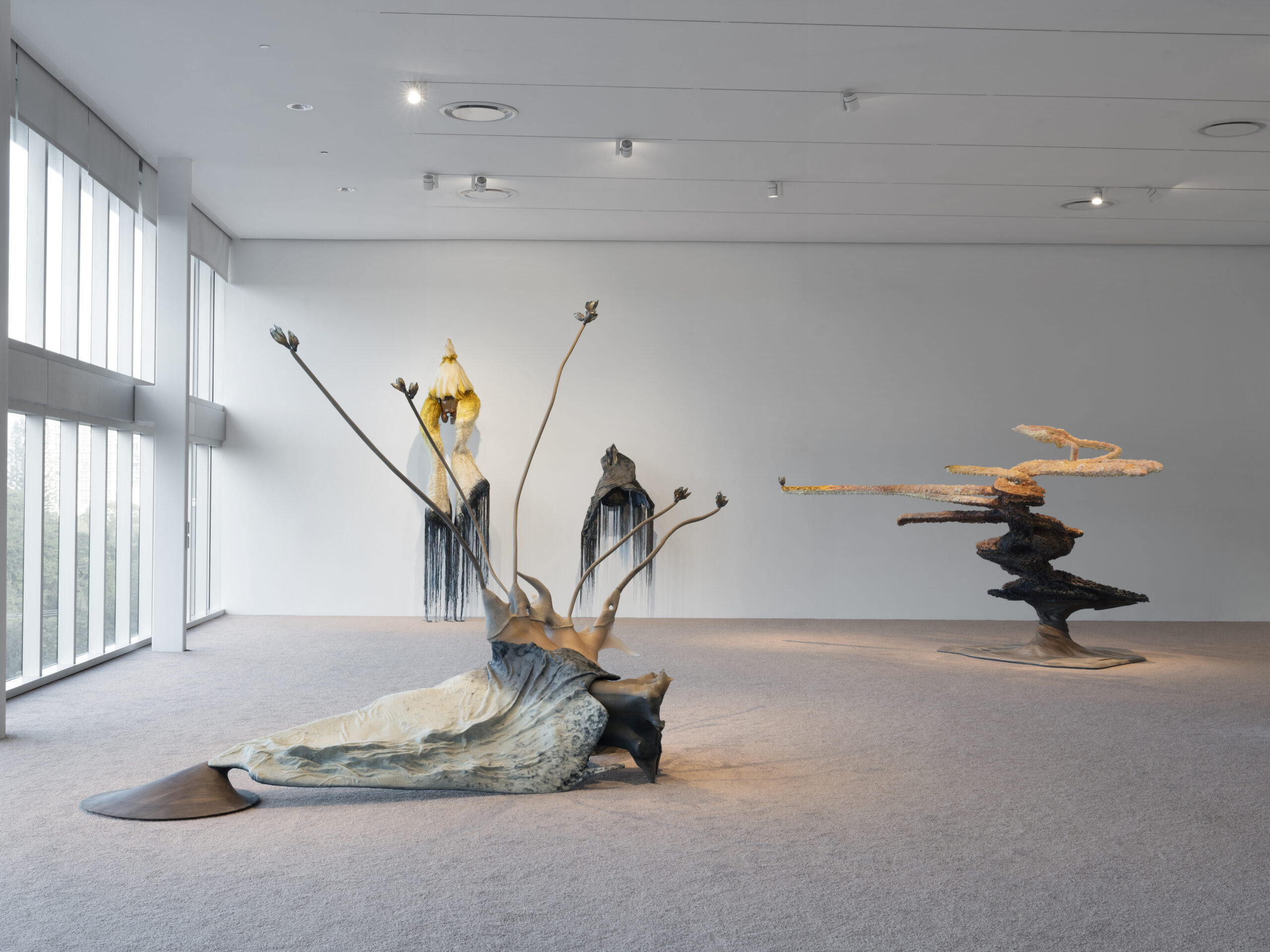
Welcome to One Fine Show, where Observer highlights a recently opened exhibition at a museum not in New York City, a place we know and love that already receives plenty of attention.
There are a number of obsessions that crop up in the science fiction of J.G. Ballard. There was nothing he loved more than an abandoned luxury hotel or a former starlet who becomes dangerously insane. Less related than these would be his certainty that in the future, the inorganic will merge with the organic, particularly when it comes to animals. We will have armadillos whose shells become resistant to nuclear blasts and crocodiles with diamond-encrusted skin. The main characters of Crash have a similar impulse in wanting to merge their bodies with those of wrecked cars, but the results tend to be less elegant.
The work of Marguerite Humeau (b.1986) offers similarly fantastic mergings, fine examples of which can be seen in “\*sk\*/ey-,” her exhibition at the Institute of Contemporary Art, Miami. There, her newly commissioned sculptures and video mix the animal with materiality in an immersive installation that represents the clearest distillation of her aesthetics yet.
Visitors to the carpeted room of the show are greeted with Skult (The Uprooted) (2024), a kind of tree made with wood, though the full materials must be listed in full: “dyed laser-cut silk single organza, beeswax, hand-blown glass, milled walnut, polystyrene foam, epoxy resin, fiberglass, cotton and steel.” It’s like an oversized piece of driftwood that happens to be alive, swirling without feeling random and goopy without being gross. Despite all the technology, it feels remarkably natural, even friendly. The walnut is 150 years old.
SEE ALSO: The Quiet Power of Presence – Amy Sherald at SFMOMA
The exhibition shares its title with the video piece, which comes “from the antiquated, proto-Indo-European term for shedding or splitting, ‘sk-ey,’ alluding to a mysterious mutation of the Earth.” In it, the soil peels off the earth and, amidst the buzzing of bees, turns into flying creatures, some of which can be found on the wall of the exhibition as sculptures. The video alternates between skylines and delicious textures like you might find in a video game.
Her flying creatures drape their wing-cloaks around themselves in a dramatic fashion. The extent to which these are non-threatening is a major feat. Skaza (The Conference in the Air III) (2024) offers swollen lips of hand-blown glass. You wouldn’t want to kiss them, but they somehow aren’t grotesque. These six flying beasts do resemble vultures on some level, but they aren’t watching you, they’re merely resting.
Returning to the floor, we have Skero (The Dormant) (2024), a sculpture that feels like Skult but is marked by appendages that might be poking in the air as the creature sleeps or reaching up to the sky as it grows. Are these dormant roots awakening? There’s so much non-human language in our brains and in this show. It’s a joy to try to decipher what these beings have to teach us.
Marguerite Humeau’s “\*sk\*/ey-” is on view at ICA Miami through March 30, 2025.
<
